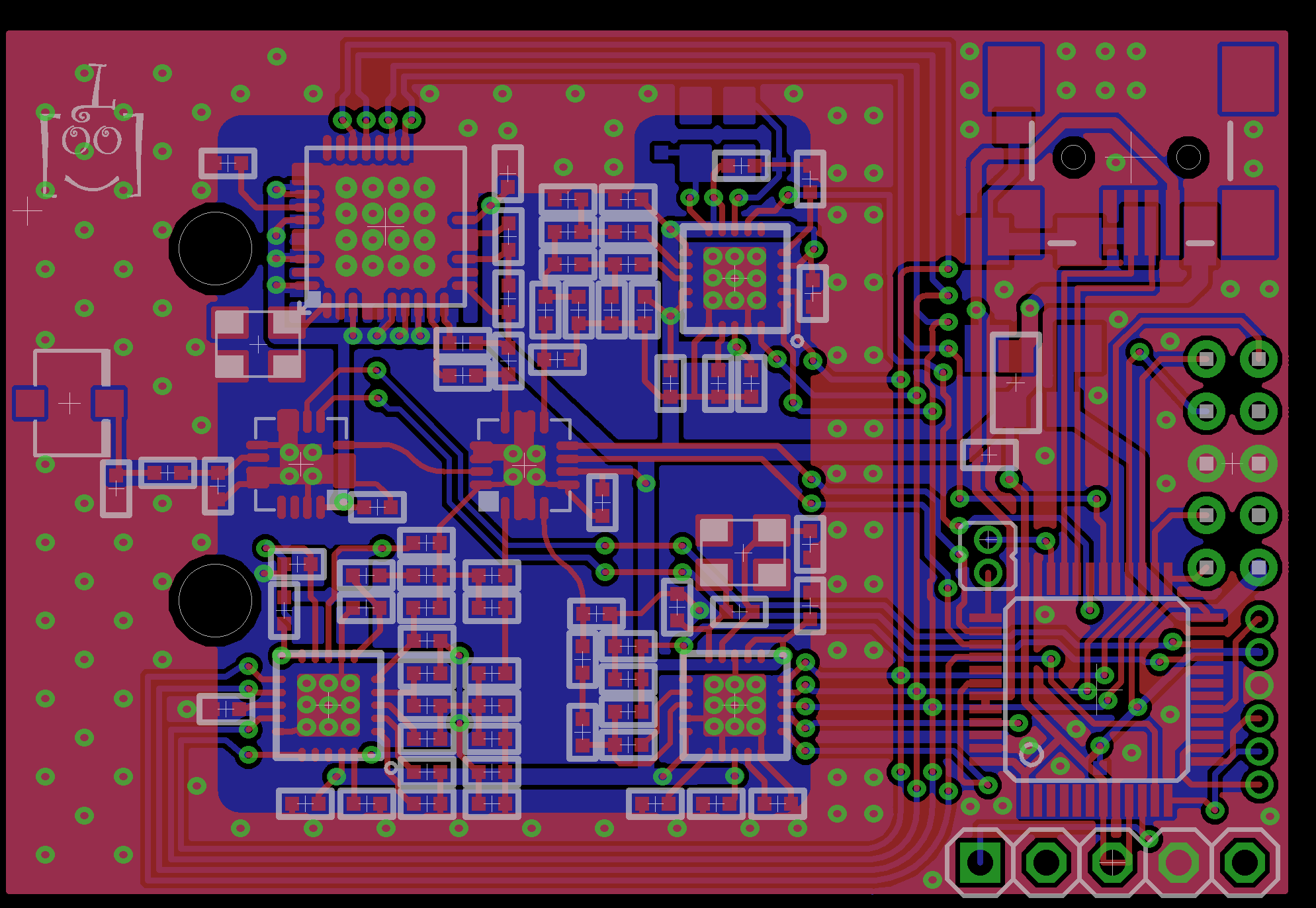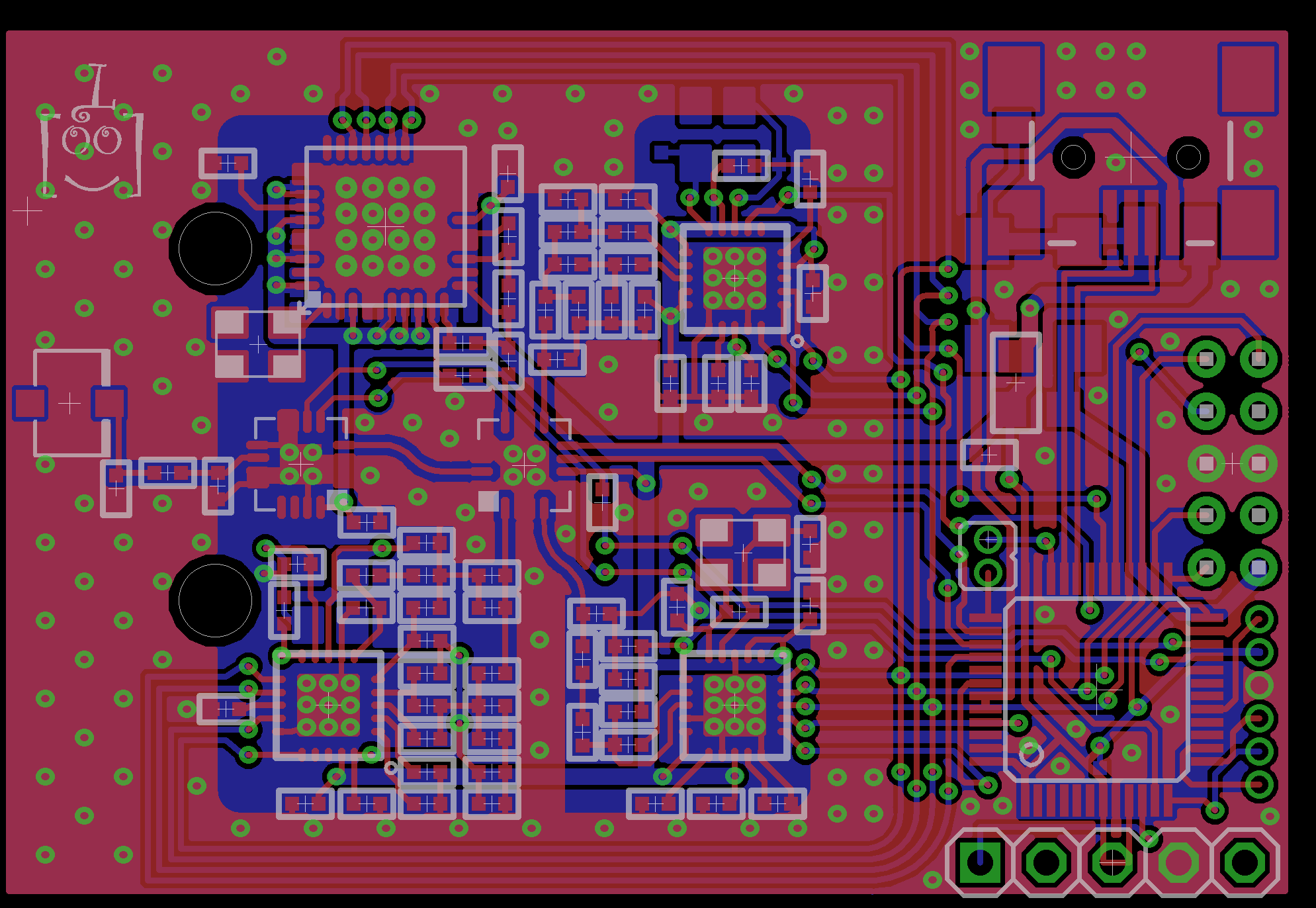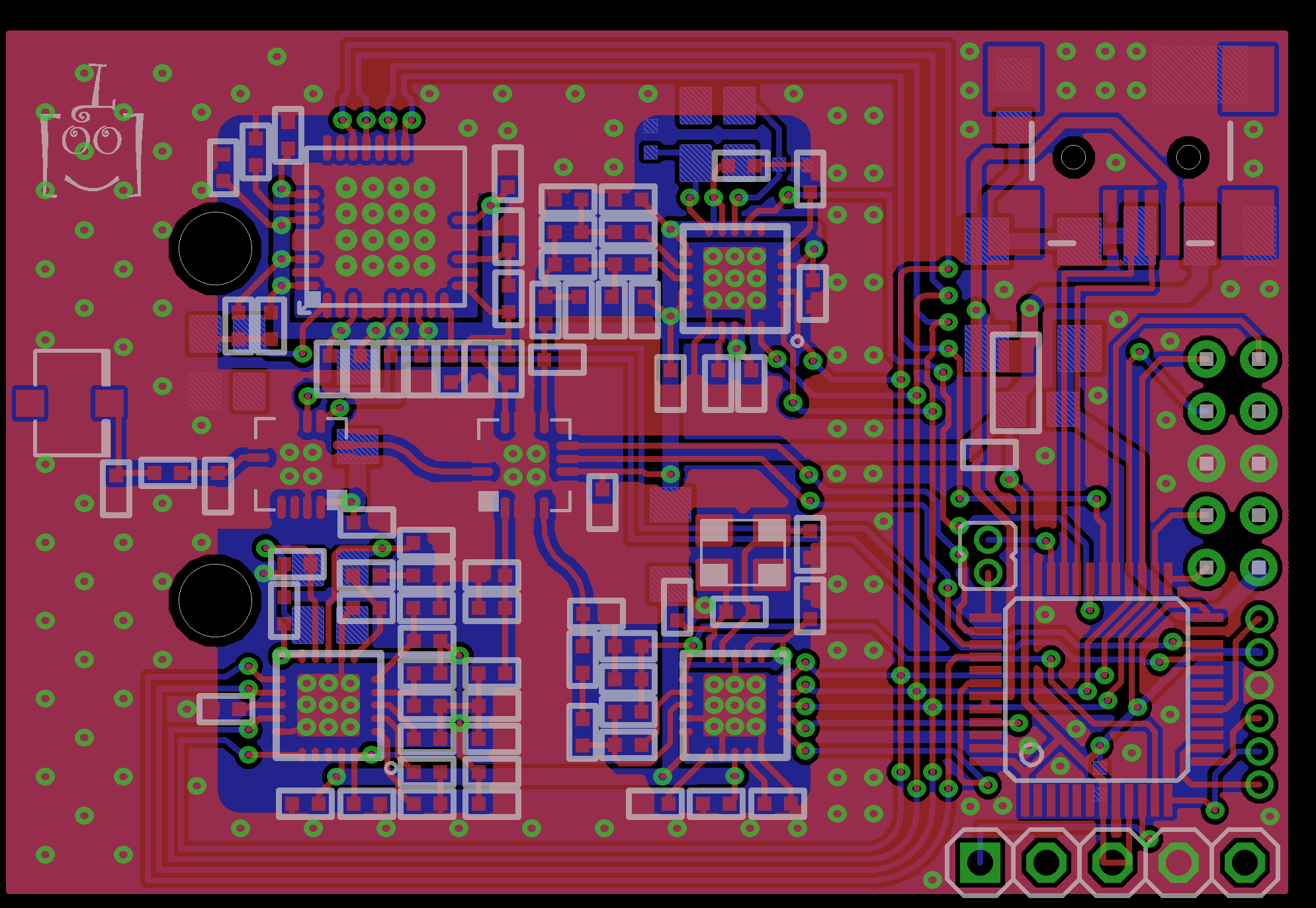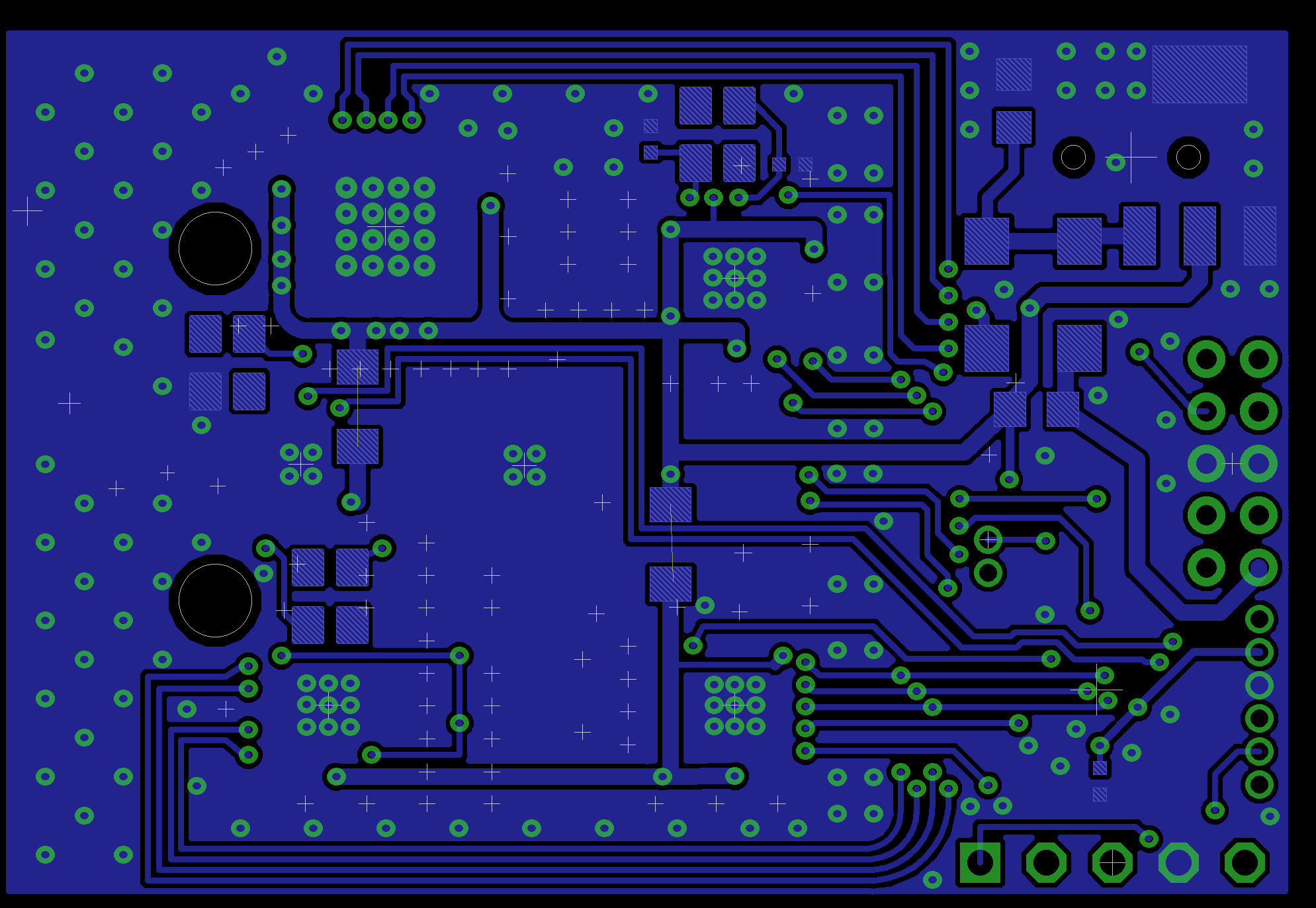- Posts: 4403
Single-Board Universal Module
- PhracturedBlue
-
Topic Author
- Offline
The nrf only enables VDD_PAEN during transmit (elsewise is is off) My crude code takes 5.1us to switch the PA (should be easy enough to improve that), and the PA seems to be doing its thing (range was acceptable)
So I now know:
a) I can program the STM32F072
b) the circuit seems to be working ok to enable the ACK on the NRF24L01
Please Log in or Create an account to join the conversation.
- SadSack
-
- Offline
- Posts: 317
Please Log in or Create an account to join the conversation.
- victzh
-
- Offline
- Posts: 1386
PhracturedBlue wrote: So I now know:
a) I can program the STM32F072
b) the circuit seems to be working ok to enable the ACK on the NRF24L01
Sounds great! You had a productive Memorial Day!
Please Log in or Create an account to join the conversation.
- SadSack
-
- Offline
- Posts: 317
Please Log in or Create an account to join the conversation.
- PhracturedBlue
-
Topic Author
- Offline
- Posts: 4403
I did not have much fun soldering the leads onto the NRF module. Removing the switch was trivial, but soldering wires to 0402 pads was not fun. My hands just aren't steady enough. Using a pair of helping hands, I got 2 of the 3 wires soldered, but botched the 3rd wire. I ended up just gluing it down to the board and bridging the gap with conductive paint. Got the connection to work without any shorts though, which is all that counts.victzh wrote:
PhracturedBlue wrote: So I now know:
a) I can program the STM32F072
b) the circuit seems to be working ok to enable the ACK on the NRF24L01
Sounds great! You had a productive Memorial Day!
SadSack has been going to town on the board design. he's got it looking much nicer than how I left it. I justwish we knew what we were doing with regards to this 2.4GHz stuff
I have learned a lot about Smith charts in the past week or so. I now understand how the matching devices work for the most part. But (a) there are parasitic effects that are not documented that need to be considered, and (b) Not all data-sheets document the driving impedance of the RF circuitry. So while I understand how it works, I can't actually figure out how to tweak the components to account for the discrepancies we may have added
Please Log in or Create an account to join the conversation.
- FDR
-
- Offline
Please Log in or Create an account to join the conversation.
- PhracturedBlue
-
Topic Author
- Offline
- Posts: 4403
Please Log in or Create an account to join the conversation.
- FDR
-
- Offline
Please Log in or Create an account to join the conversation.
- victzh
-
- Offline
- Posts: 1386
On the other hand, this information is frequently present in Johanson balun datasheets and there are many baluns for different RF chips specifically made by them. Baluns are a bit more expensive than descretes, but may be more reliable with regards to matching.
Please Log in or Create an account to join the conversation.
- PhracturedBlue
-
Topic Author
- Offline
- Posts: 4403
While I'm not sure it is valid, I'm effectively treating the RF circuits as 3 pieces:
from the transceiver to the switch we need to do balancing and match the 50ohm load (just like an antenna)
from the switch to the PA we have a 50ohm to 50ohm route, so it should just be compensating for the route. Since it is a transmission line, Which doesn't affect an entirely real load (which we should have if we matched everything upstream), the only concern would be parasitics. From the PA to the antenna should be the same, but you need to worry about harmonics to satisfy the FCC which is the purpose of the Pi network.
I'm not entirely sure how the switch impacts the circuit though, and I've never seen a design using one (though we have some transceiver boards that use 2:1 switches so they can use a cheaper PA. From what I've seen, they do the design the same way I have.
I found 2 interesting documents on tuning 2.4GHz designs. They give an indication of how to adjust the passives, but I'm not very confident. even with a rework station the devices are so close together, I'm not sure I'll be able to swap them out by hand.
You said:
Is there a specific concern you had, because this is exactly what I am planning to do though. It won't tell me about the harmonics or radiation (and so wouldn't be useful for FCC compliance), but should give me an idea of the overall efficiency.You can't just connect a Network Analyzer to the active output
Please Log in or Create an account to join the conversation.
- PhracturedBlue
-
Topic Author
- Offline
- Posts: 4403
Is there any benefit to using the BK2423 over the NRF24L01+? while it is almost a drop in replacement, there are a few changes that woul be needed to the pads and passives. I was planning to stick with the Nordic chip because it is the only one I've seen boards for, but the BK2423 is cheaper, and if there is a benefit to using it, now is the time to decide.
Please Log in or Create an account to join the conversation.
- SeByDocKy
-
- Offline
- Posts: 1016
PhracturedBlue wrote: Victzh,
Is there any benefit to using the BK2423 over the NRF24L01+? while it is almost a drop in replacement, there are a few changes that woul be needed to the pads and passives. I was planning to stick with the Nordic chip because it is the only one I've seen boards for, but the BK2423 is cheaper, and if there is a benefit to using it, now is the time to decide.
According to datasheet :
i ) nRF24L01+
RXsens(0.1% BER)@2Mbits = -82dBm
ii) BK2423
RXSENS (1 E-3 BER = 0.1% sensitivity@)@2Mbps -87 dBm High Sen mode
Please Log in or Create an account to join the conversation.
- SadSack
-
- Offline
- Posts: 317
Please Log in or Create an account to join the conversation.
- PhracturedBlue
-
Topic Author
- Offline
- Posts: 4403
Send me the lbr/sch when you get a chance please.
It looks really nice. You did a great job cleaning up the board.
Things still to do:
1) add a few more vias to the ground plane especially near the switch
2) remove all 90-degree corners (there are very few left, mostly on the bottom layer). These can radiate high-frequency noise and degrade performance
3) Add some more decoupling cap for the STM32F072
4) See if we can fit 1 or 2 10uF decoupling caps on Vcc in the RF section to help with power-supply stability given the long snaking nature of the route
Edit:
5) Add some mounting holes on the corners (left side). The existing holes are just to accept the pins on the Devo module, and won't be used for securing the part, since they'll be covered by the tin shield.
Please Log in or Create an account to join the conversation.
- PhracturedBlue
-
Topic Author
- Offline
- Posts: 4403
The BK2423 also has up to +3dBm output (vs 0dBm on the nrf24l01p), but this doesn't really help us much given we have a 25dBm amp with a max output of ~22dBm.
On the downside the BK2423 requires about 80% more current at equivalent power settings for Tx/Rx
Please Log in or Create an account to join the conversation.
- SadSack
-
- Offline
- Posts: 317
Please Log in or Create an account to join the conversation.
- victzh
-
- Offline
- Posts: 1386
Some protocols rely on auto-acknowledgement, which is equivalent to receiving.
How different is the layout?
Please Log in or Create an account to join the conversation.
- PhracturedBlue
-
Topic Author
- Offline
- Posts: 4403
1) need to remove the solder resist over the pad
2) need to alter the passive component values
In theory (1) doesn't actually need to be different (we could solder the nrf24L01+ too, since apparently everyone does that anyway)
(2) is only an assembly/BOM issue
I'm surprised any protocol uses auto-ack during normal operation. given that the PA is only on the Tx, and the LNA cannot compensate for not having a PA on the Rx, you effectively have more range in Tx than in Rx. But I guess on a micro, noone cares. But for that case, we likely won't notice the difference anyway.
Please Log in or Create an account to join the conversation.
- PhracturedBlue
-
Topic Author
- Offline
- Posts: 4403
The ideal radius of a bend is > 3x the line width for all signal wires The smooth-curves are preferable to 45-degree angles where possible
Please Log in or Create an account to join the conversation.
- SadSack
-
- Offline
- Posts: 317
Please Log in or Create an account to join the conversation.
-
Home

-
Forum

-
Development

-
Development

- Single-Board Universal Module




